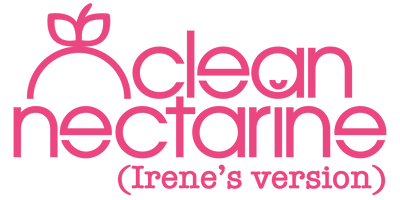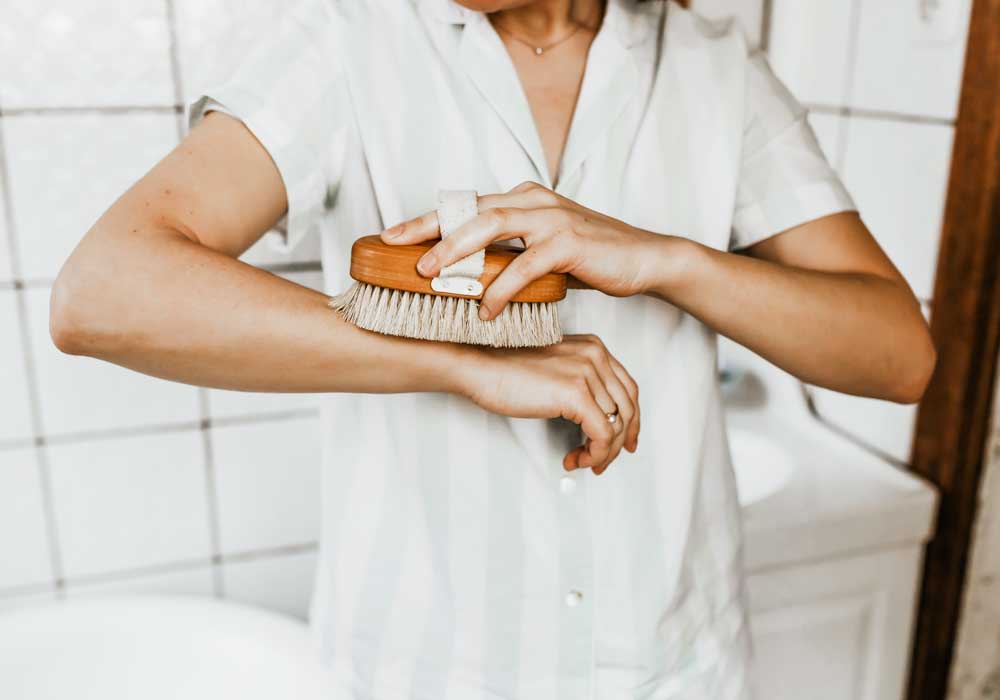If there's one beauty ritual that's managed to stand the test of time while maintaining its place in traditional Ayurvedic practice, it's dry body brushing. This ancient wellness tradition has found its way into modern routines worldwide, and for good reason.
While most skincare trends require investing in expensive serums or booking treatments, dry body brushing is refreshingly accessible. All you need is a dry brush and five minutes before your morning shower to experience benefits that may include smoother skin and a sense of invigoration.
But what exactly makes this simple practice so popular? And more importantly, how can you incorporate it into your own routine? We've explored the tradition to bring you everything you need to know about this time-honoured ritual.
What is dry body brushing?
Dry body brushing, also known as garshana in Ayurvedic tradition, is a pre-shower ritual that involves brushing your completely dry skin with a natural-bristled brush made for the body. This practice dates back centuries, appearing in virtually every historical civilisation from Ancient Egyptian, Ayurvedic, and Traditional Chinese Medicine to the bathing rituals of the Greeks, Romans and Japanese.
The Ancient Egyptians were true pioneers of beauty rituals, using early forms of dry brushing with natural materials and exfoliating with sour milk and wine thousands of years ago. In Ayurveda, India's 5,000-year-old holistic health care system, dry brushing is traditionally used to stimulate circulation, support lymphatic flow, and assist in removing dead skin. Known as Gharsana, it’s believed to help energise the body and improve skin texture.
While other cultures developed their own versions of this ritual, including the Turkish kese mitt, like our Lumi Turkish Silk Exfoliating Mitt, and the Korean Italy Towel used in traditional bathhouses, dry brushing remains a simple, invigorating way to boost circulation and support the lymphatic system.
What are the benefits of dry body brushing?
- Exfoliates dry skin cells: The most immediate effect is the removal of dry, flaky skin that can make the surface appear dull. Regular brushing helps reveal fresher-looking skin and is often used to support concerns like keratosis pilaris.
- Encourages healthy-looking circulation: The firm brushing motion may support improved blood flow to the surface, giving the skin a more vibrant, healthy glow.
- Improves the appearance of skin tone and texture: Over time, regular brushing can support a smoother, more even look. It’s often used to help improve the appearance of dimpled or textured skin.
- Preps skin for hair removal or tanning: Brushing the skin helps remove dry patches for a more even shave or self-tan.
- Enhances product absorption: Exfoliated skin is more receptive to moisturisers and oils, helping them absorb better.
- A refreshing start to the day: The ritual itself is energising, especially when followed by a warm or cool shower.
Who should avoid dry brushing?
If you have broken or inflamed skin, sunburn, eczema, or rosacea, it’s best to skip dry brushing in those areas or avoid it altogether. Always use gentle pressure, especially when starting out, and consult a professional if you’re unsure whether it’s right for your skin.
How do you dry brush your body?
- Choose the right brush: Look for one with natural bristles. Try the Hydrea Professional Vegan Dry Body Brush.
- Time it right: Morning before your shower is ideal to wash away loosened skin.
- Start at your feet: Use upward strokes toward the heart, covering the legs, arms, torso, and neck.
- Use circular strokes on the abdomen: Move in a gentle clockwise direction.
- Adjust pressure: Be firm but never harsh. Use light pressure on delicate areas.
- Keep it short: 3–5 minutes is plenty.
- Shower immediately after: To rinse off exfoliated skin.
- Moisturise while damp: Use a body oil straight after your shower for best absorption.
Want to make dry brushing part of your wellness routine?
- After brushing: Follow with a warm (or cool) shower, then apply a nourishing body oil while your skin is still damp to lock in moisture.
- Tongue cleaning: An Ayurvedic oral care ritual that’s simple and effective. Explore more in this blog.
- Oil pulling and natural mouthwash: Traditional oral care options using herbs like neem, peelu, and coconut oil. Browse Ayurvedic mouthwash and oral care.
- Abhyanga (self-massage): An Ayurvedic practice of warm oil massage that pairs beautifully with dry brushing. Learn how to bring Ayurveda into your daily routine.
Popular Questions About Dry Brushing
Can dry brushing help with cellulite?
Dry brushing is often recommended as part of a natural routine to support healthy-looking skin texture. It may help improve the appearance of dimpled or uneven skin over time by encouraging circulation and exfoliation. The Weleda Birch Cellulite Oil is a great follow-up. In a 28-day study, skin was shown to be 22% firmer and 21% smoother.
Is it better to dry brush in the morning or at night?
Dry brushing is typically done in the morning because it can help energise and invigorate your body for the day ahead. That said, there’s no wrong time. If evening suits your routine better, go with what feels good.
Can I dry brush if I have sensitive skin?
If your skin is prone to sensitivity, start slowly with very gentle pressure and limit brushing to once or twice a week. Choose a softer-bristled brush and always follow up with a hydrating body oil or lotion to keep the skin barrier happy.


Leave a comment